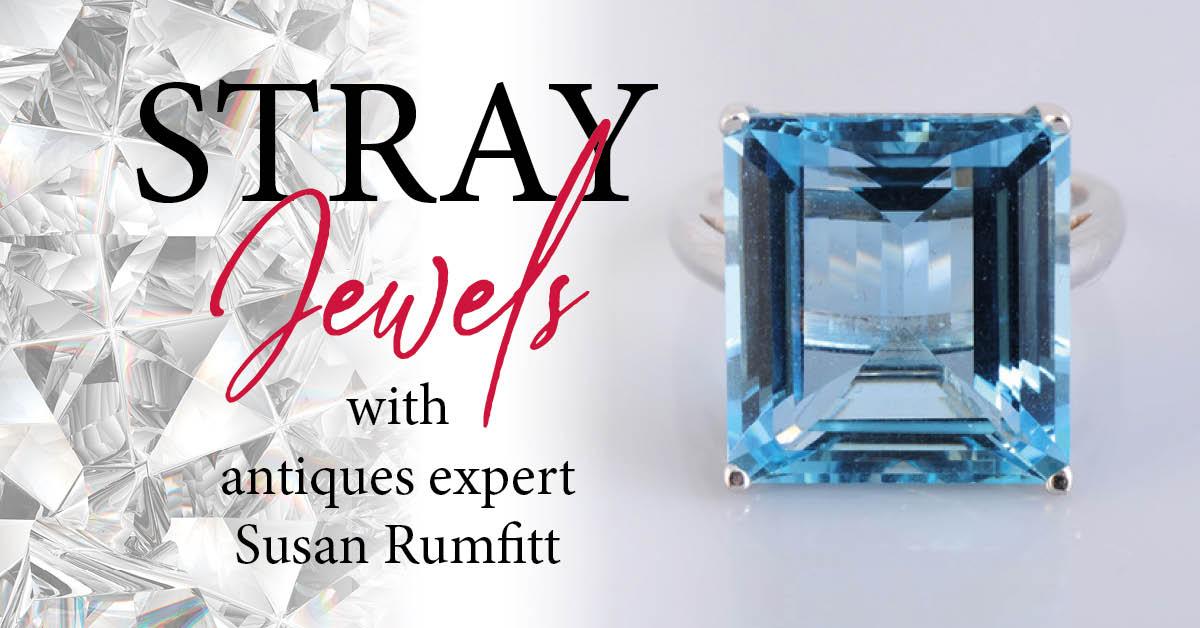Subscribe to trusted local news
In a time of both misinformation and too much information, quality journalism is more crucial than ever. By subscribing, you can help us get the story right.
- Subscription costs less than £1 a week with an annual plan.
Already a subscriber? Log in here.
27
Feb 2021
Stray Jewels with Susan Rumfitt: Amethyst and Aquamarine


 Stray Jewels is a monthly column written by BBC Antiques Roadshow jewellery specialist, Susan Rumfitt. Susan started her career working for Christie’s auctioneers in Glasgow before establishing her own jewellery department, The Gallery in Harrogate.
Stray Jewels is a monthly column written by BBC Antiques Roadshow jewellery specialist, Susan Rumfitt. Susan started her career working for Christie’s auctioneers in Glasgow before establishing her own jewellery department, The Gallery in Harrogate.
In 2006, she joined the Antiques Roadshow and has since built up an extensive knowledge of and passion for fine jewellery.
Big and bold gemstones are a big hit at the moment. The television drama “The Serpent’ has helped to re-ignite the passion for 70’s fashion and jewellery. Two fabulous gemstones that were particularly popular at the time are amethyst and aquamarine. Both stones have been a favourite in jewellery since the 18th century, particularly after extensive sources were found in Brazil. Fine examples of amethysts have also been found in Siberia and featured in many important royal jewels, including those from Russia. They also just happen to be the gemstones that represent February and March in the language of gems.
Fashionable Cuts
Both gemstones suit the emerald-cut (oblong) alongside an older cushion-cut (from the 18th & 19th centuries), as each cut brings out the depth and intensity of colour.
The February birth stone is amethyst bringing warmth to the cold days. The ancient Greeks believed amethyst gems prevented intoxication, as they were associated with Dionysus, the god of wine and revelry! The stones can be light purple or violet in colour through to an a very intense purple. They were often incorporated into Victorian jewels and were very important to the Suffragette movement of the early 20th century. The Suffragettes were fighting for women to be able to vote in public elections. Last month I wrote about acrostic jewellery – where a message of love or a person’s name could be spelled out by using gemstones, taking the first letter of each gemstone to spell out the name or message. The same principle was used by the Suffragette movement to express the purpose of their movement, to “Give Women the Vote”. Give was represented by a green stone such as peridot or tourmaline. Women was represented by white pearls or sometimes diamonds. Vote was represented by amethysts due to the violet colour. Sometimes the colours were reflected in enamelling on pieces of jewellery too. These colours were also particularly fashionable during the 1870-1900 period and consequently many pieces of late Victorian jewellery were worn in the early part of the 20th century to show a woman’s allegiance to the movement.
As designs became bolder in jewellery from the 20’s, amethysts would be incorporated with other strong colours to really make a statement - something that was replicated in the 1950’s with fantastic cocktail jewellery and again the 70’s. Being known as semi-precious stones, many amethysts remain affordable when bought both in an auction environment as well as retail, although the Siberian amethysts can fetch thousands of pounds at auction due to their intense and velvety colour.
Aquamarines, the birthstone for March are associated with courage, tranquillity and calmness. The name derives from the Latin words aqua, meaning water and mare, meaning sea, an obvious reference to its water-like colouring. As with amethysts, the depth of colour can vary, from a pale greenish blue to an intense vibrant blue. The stone was particularly fashionable in the Edwardian and Art Deco period as it provided a lovely contrast to diamonds and pearls in jewellery at the time. As a wedding gift from Prince Harry, The Duchess of Sussex received the emerald-cut aquamarine cocktail ring that had belonged to his mother, Diana, Princess of Wales.
As we emerge from the cold February days and see the purple of the crocus popping up over the Stray, below the lovely bright blue sky on a fresh spring sunny day, why not consider treating yourself to one (or both) of these beautiful stones, bringing a bit of brightness into your jewellery collection.
Read More:
- Stray Jewels with Susan Rumfitt: Valentine gifts
- Stray Jewels with Susan Rumfitt: Inspired by Animals
0